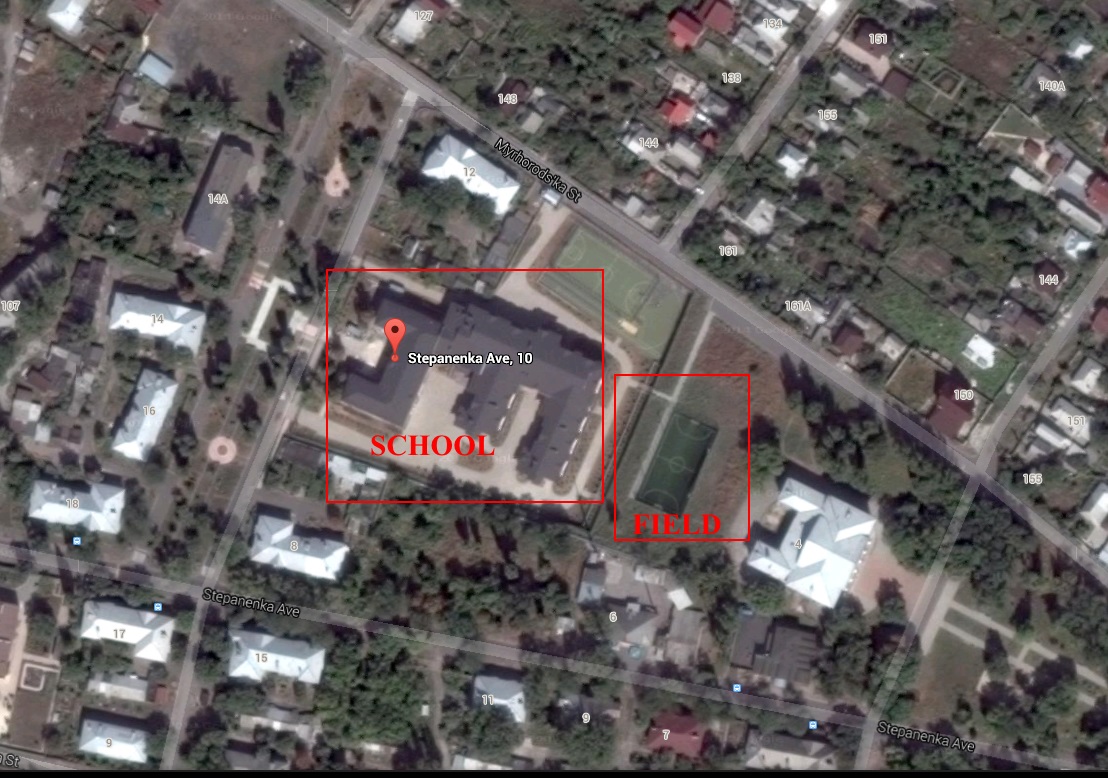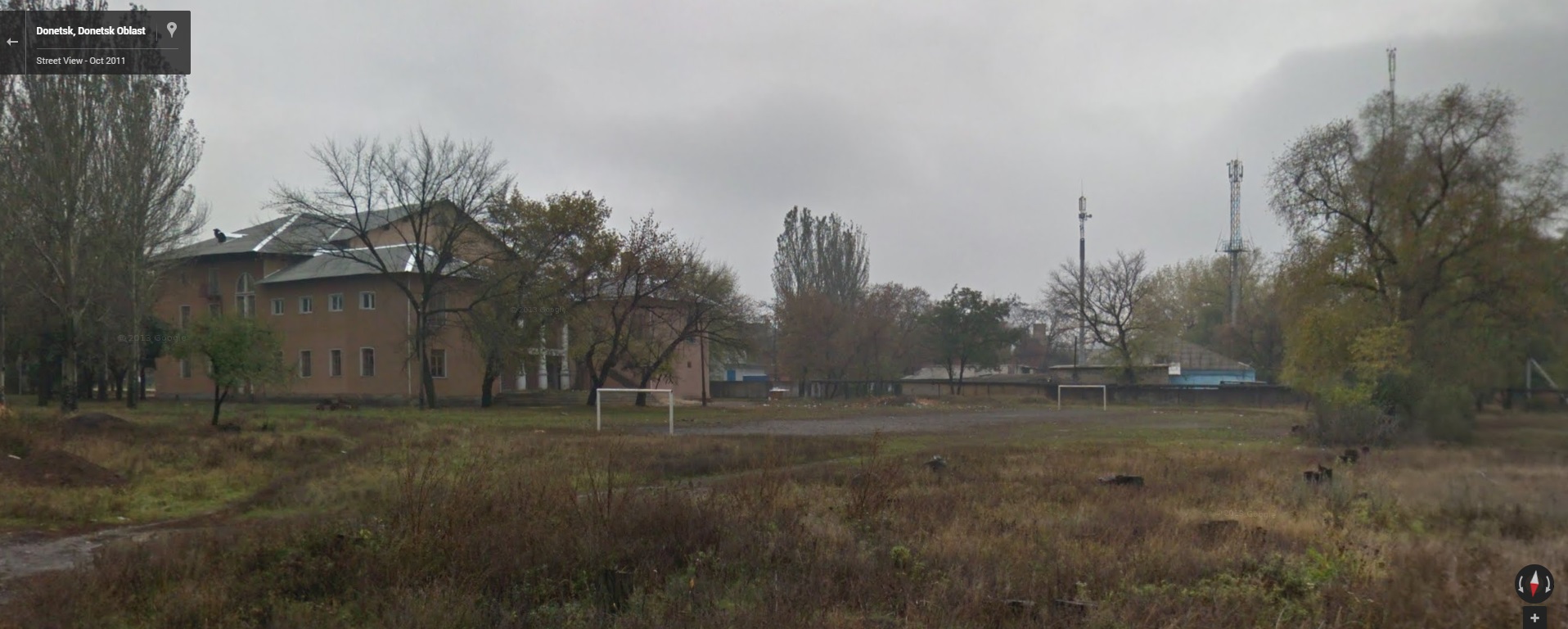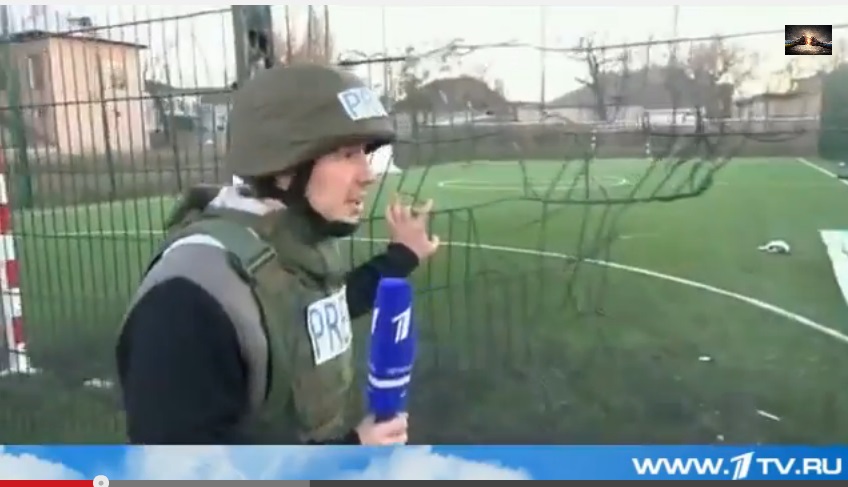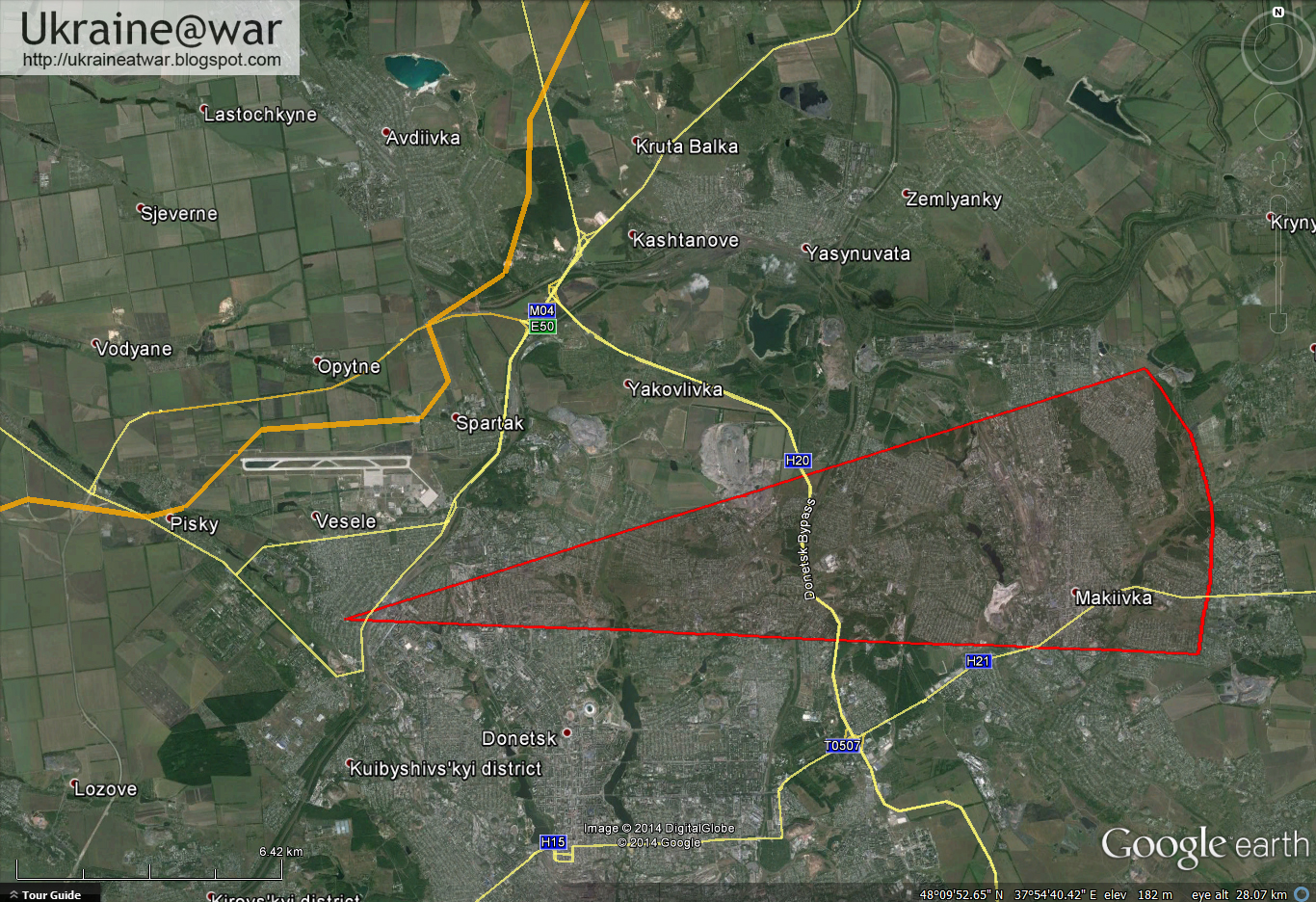Yesterday’s liveblog can be found here. An archive of our liveblogs can be found here. For an overview and analysis of this developing story see our latest podcast.
Please help The Interpreter to continue providing this valuable information service by making a donation towards our costs.
View Ukraine: April, 2014 in a larger map
For links to individual updates click on the timestamps.
For the latest summary of evidence surrounding the shooting down of flight MH17 see our separate article: Evidence Review: Who Shot Down MH17?
Below we will be making regular updates so check back often.
The National Security and Defense Council is warning that Russian armor is staging on its border. This matches warnings given by NATO earlier today.
RFE/RL reports:
The Security Council said on November 6 that 60 unmarked armored vehicles, including 50 T-64 tanks, were moved to a town close to the border in the Rostov region of Russia.
The Ukrainian government also refuted allegations from pro-Russian separatists that they had launched a new offensive in eastern Ukraine, with military spokesman Vladyslav Seleznyov saying they were abiding by the September 5 cease-fire agreement.
Meanwhile, the self-proclaimed Donetsk People’s Republic said the Ukrainian military had conducted a “massive mortar attack” on Donetsk’s Kirovsky district.
The Russian news agency Ruptly has two different live video feeds from Donetsk. The shelling and explosions are currently constant.
This video is facing Donetsk airport (note, the preview thumbnail is old):
David Patrikarakos has reported on the various phases of the crisis in Ukraine, from the protests, to Russia’s annexation of Crimea, to its invasion of eastern Ukraine. In an article for Prospect Magazine he argues that the existential threat which Ukraine faces is political — the foundering economy and the corruption that gave rise to the Euromaidan movement — and not military. The problem, Patrikarakos argues, is that it is proving to be politically challenging to tackle the economy and reform the government while there’s a war on. Since Ukraine has held parliamentary elections which were prevented by Russian-backed insurgents in territory they control, and since those separatists have now held elections which Kiev does not recognize, the problem may be getting worse:
These parallel elections exemplify the essence of the three-fold problem facing Kiev that began with Russia’s March seizure of Crimea and that continues to sustain the crisis today. The first two problems are obvious: Kyiv remains unable to effectively govern its territory and it is clear that the separatists are going nowhere—despite the various overtures Poroshenko has made to them.
The third problem is perhaps the most difficult: Concessions to separatist demands don’t work for the simple reason that it is Moscow that drives the rebels and controls their leadership. “The centre of the crisis is the Kremlin,” the security official continued that sunny afternoon and this is a view shared by every single politician I met in Ukraine.
The exact scope of Russian President Vladimir Putin’s intentions toward Ukraine is uncertain but it is clear that keeping the conflict going serves his interests. Russia’s deep-rooted social and economic problems have receded in the public imagination since the annexation of Crimea. A resurgent Russian nationalism now sees Putin as a new strongman who will avenge past humiliations. Poroshenko’s problem is that he can fight Russian soldiers in Ukraine (however imperfectly) but he can’t fight internal Russian politics.
— James Miller
The story of Graham Phillips, the infamous RT stringer, continues.
Phillips became a well-known freelance videographer and reporter in the early stages of the Russian-led revolt in eastern Ukraine. Initially his videos were being sold to mainstream media outlets (with the help of a man named Bryan MacDonald, who is now an RT columnist and whom we have recently written about), but eventually Phillips’ work was no longer accepted by mainstream media outlets because of an unacceptable “pattern of behavior.” He then began to work exclusively for the Russian state-operated propaganda network RT, and his work became increasingly and blatantly pro-Russian and pro-separatist. Phillips became infamous, however, when he claimed he was being shot at by Ukrainian soldiers when his own video showed — and his own news agency reported — that all he had done was walk into a proximity-alert trip wire which triggered a flare.
Phillips has also been filmed shooting guns in separatist training camps, and has repeatedly been filmed wearing uniforms of the Russian-backed insurgents.
Once again, Phillips has been spotted on the front lines of combat — near guns, Russian soldiers, and potentially child soldiers. Investigator RobPulseNews has been keeping a close eye on Phillips:
In the picture above, the group with the red banner is part of the ultranationalist leftist group called Essence of Time, headed by Sergei Kurginyan, who has by his own admission supplied weapons to the Russian-backed separatists. Kurginyan also bragged about sending an electronics specialist to repair a Buk anti-aircraft system in Donetsk. Evidence suggests that a Buk system was used by the Russian-backed separatists to shoot down civilian airliner MH17.
The Russian state-media itself has posted some of the videos which appear to show these child soldiers:
This is not the only case of Russian journalists getting a little too involved in the fighting. Last week a Russian actor, Mikhail Porechenkov, was filmed firing a machinegun, while wearing press insignias, at the Ukrainian soldiers stationed at Donetsk airport. The OSCE condemned the misuse of press insignias because this kind of behavior of “puts journalists in conflict zones at grave risk and it is detrimental to all efforts made to protect members of the media… “Journalists’ safety is paramount and press insignias are one of the few measures they can take to ensure their safety in conflict zones.”
— James Miller
As we reported yesterday, shelling has killed two teenagers and wounded others at a school near the Donetsk International airport.
The airport is controlled by Ukrainian soldiers who have been desperately defending from the Russian-backed militants for months. The Ukrainians are completely surrounded, and many civilians have been killed in the fighting. The Russian-backed fighters have taken up positions in many areas around the airport, many of them still occupied by civilians.
The Russian government blames Ukraine for the shelling. Now, the Ukrainian government, via the National Security and Defense Council and Minister of Foreign Affairs Pavlo Klimkin, is blaming the Russian-backed separatists for the incident.
However, there is already some evidence, based on pictures and videos taken of the impact site, that suggests that the shells came from the east, rebel-held territory. As our investigation yesterday showed, the fences near the tennis court, and several buildings damaged in the area, have damage to their east side, indicating that the shell may have come from that direction.
That investigation was relying on pictures and videos from many sources, but a closer investigation into the incident by experts who can more thoroughly examine the impact craters is needed.
No matter who is to blame, the reality is that civilian casualties are not rare in Donetsk, and with fighting once again increasing, that trend is likely to only get worse.
— James Miller
The headline he’s taken a picture of is from Reuters:
Russia has moved troops closer to the border with Ukraine and continues to support rebels in the country’s east, NATO’s chief said on Tuesday, after an election held by the pro-Russian separatists and condemned by Kiev and Western leaders…
“Recently we are seeing Russian troops moving closer to the border with Ukraine,” Jens Stoltenberg, secretary-general of NATO, told a news conference with EU foreign policy chief Federica Mogherini.
“Russia continues to support separatists by training them, by providing equipment and support them by also having Russian special forces inside eastern parts of Ukraine.”
“We call on Russia to make genuine efforts towards a peaceful solution,” Stoltenberg said, “and to use all their influence on the separatists to make them respect the Minsk agreements and to respect the ceasefire which is a precondition for a political solution to the difficult situation in Ukraine.”
Coalson, however, is probably referencing the reality that there is significant empirical evidence that Russian troops are already inside Ukraine, where they have been for months, and both those troops and the Russian-backed separatists whom they are supporting are increasingly active near the front lines.
Ukraine’s National Security and Defense Council is reporting today that not only is there more fighting, continuing a trend which started the day after parliamentary elections, but Russian troops are building on the border.
“The European Union allocates unprecedented volumes of aid to Ukraine, which amount to €11 billion. We helped Russia and Ukraine reach agreement on the entire range of complex gas issues and sums will be coming both from the EU and the IMF for Ukraine’s gas debt repayment.”
The debt must be paid off in full for Russian gas supplies to continue beyond December 31 this year.
— Pierre Vaux
The Russian Investigative Committee has opened up a case against Ukraine’s Ministry of Defense, Army and National Guard on charges of deliberately shelling School No. 63 in Donetsk with artillery weapons, spokesman Vladimimr Markin said in a statement on the agency’s website today, November 6.
The school was hit yesterday, November 5 at about 5:00 pm in the afternoon as a group of children were playing on the soccer field. Two teenagers were instantly killed, and at least four were wounded, one seriously. The school was closed due to increased shelling in recent days in Donetsk, but the children had gathered there to play ball.
Russia is making the claim that Ukrainian forces, under siege at the Donetsk Airport for weeks as they take a last stand in a city mainly controlled by the so-called “Donetsk People’s Republic,” deliberately took aim at School No. 63 at 10 Stepanenka Street in the Kuybyshevsky District of Donetsk.
The investigation has been opened under charges of Art. 105, part 2, sections a, v, e, zh, and p, and Art. 356, part 1 of the Russian Criminal Code (“murder committed under aggravating circumstances, use of banned weapons and methods of conducting war”).
The Russian government claims that the Ukrainian armed forces “took aimed fire from heavy artillery” at the school. The case even claims that this is a “hate crime”:
As the investigation believes, the above-mentioned officials committed artillery shelling with the purpose of destroying an ethnic group of the Russian-language population, living on the territory of the self-proclaimed Donetsk People’s Republic. Furthermore, statutes of a number of international conventions have been violated, including the Convention on the Rights of the Child, and also the Protocol on the Cessation of the Use of Arms in the Southeast of Ukraine and the Memorandum to it, signed in Minsk in September of this year.
The Investigative Committee has linked this case with its main criminal case against Kiev on the “use of banned weapons and methods of conducting war and of genocide of the civilian population living in the self-proclaimed Donetsk and Lugansk People’s Republics.”
The statement is the most stark to date in accusing Ukraine of deliberate assault on the Russian people in the Donbass.
Yet the Russian government has not supplied any evidence that the Ukrainian military intentionally targeted the school, nor has it supplied evidence to confirm that the shelling came from the direction where Ukrainian forces are located.
School No. 63 has been a project of Ukrainian businessmen Rinat Akhmetov, who is himself a graduate. In recent years, he funded building renovation and the installation of the soccer fields and fences.
In a statement yesterday, Akhmetov said he would provide assistance to the victims and their families, and urged both sides in the war to cease warfare in civilian areas. His relationship to the school has fueled conspiracy debates on social media, with speculation that his school could have been deliberately targeted or the incident staged. Akhmetov has reportedly paid separatists to keep them from shelling his many properties in Ukraine, including coal mines, but has also tacitly supported the government of President Petro Poroshenko.
Yesterday we published a number of videos and pictures from the scene that cast doubt on the claims that the missiles could have come from Ukrainian forces in Peski, as claimed by Russian state news and the Russian-backed separatists.
In this video, the damaged fence of the soccer field can be seen, and where the victims, Daniil Kuznetsov, 14, an 8th grader, and Andrei Yeliseyev, a graduate of the school, were felled by shrapnel.
The view is toward the south, looking from Mirogorodskaya Street
toward Stepanenka street. The school is located here on Google Maps.
As
we explained in detail, using the available views from Google Street
View, before the soccer field was constructed, and later pictures, it
appears that the shell hit the northwest corner of the soccer field at
an angle, and then hit the western fence. Therefore, it does not appear
possible for the missiles to have come from Peski, from the northwest,
and it appears more likely that they came from the northeast.
The separatist fighters control the territory to the east of Donetsk, and are known to have firing positions there.
The
shells also do not appear to have come directly from the north, from
the airport nearby where Ukrainian forces are positioned, because they enter the field at an angle.

The location on Google Street View is here.

The reporter from Russian state TV’s Channel 1 is standing at the north end of the soccer field by a damaged fence bent inward, which shows the likely direction of the missile.

We have shown the videos, photos and testimony to our colleague @djp3tros at Ukraine@War who concluded that the damage indicated a likely direction of the missile from the northeast, that is, the position of Russian-backed separatists:


More photographic materials, examination of evidence on site, and eye-witness
reports would be needed to draw a conclusion, and in this type of
situation, it may not be possible to state conclusively the direction or position from which the artillery fire was launched.
Even so, the
available evidence to date does not suggest that the shelling was
deliberate, and it is possible it could have come from separatist
positions. We have reported in the past on one such field in Makeyevka run by the separatist fighter nick-named “Givi” and the Somalia Battalion.
The Ukrainian government has not yet responded to the opening of the criminal case, but a representative of the Ukrainian Foreign Minister, made a comment on Twitter:
Translation: The shell from which the children were killed in Donetsk was released from the territory controlled by the terrorists. Here is photo evidence.
For more detailed information, see Missile That Killed 2 Teens in Donetsk May Not Have Come from Ukrainian Forces.
— Catherine A. Fitzpatrick